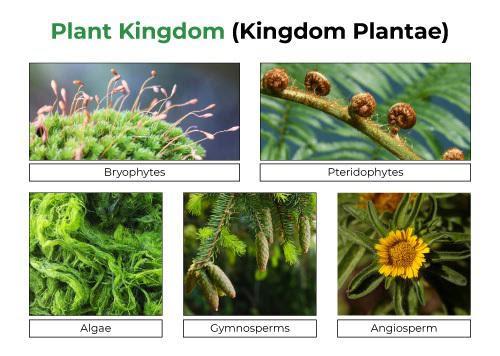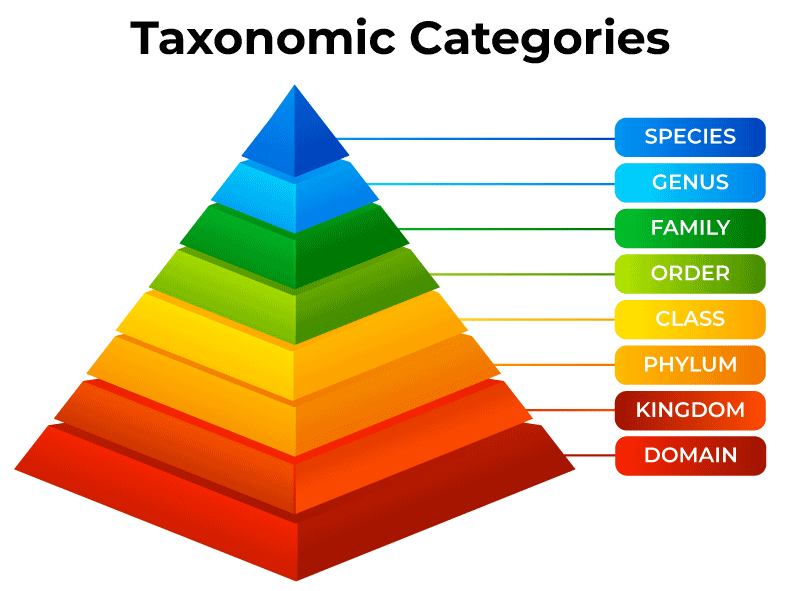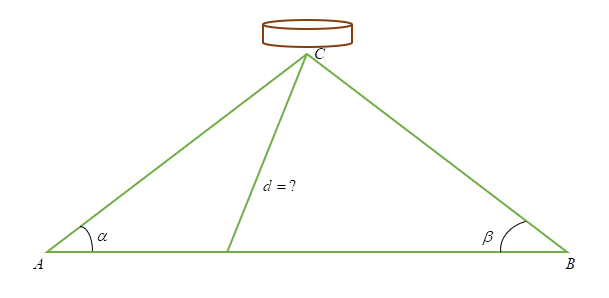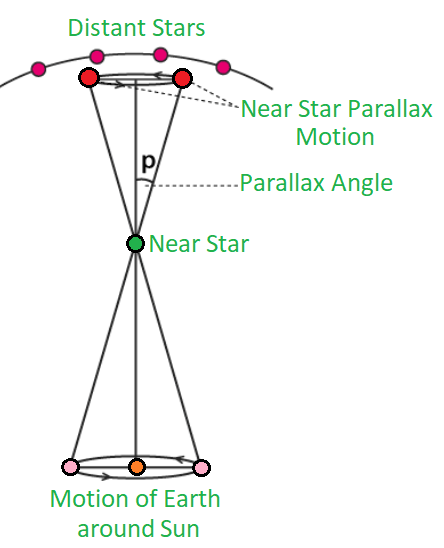Please Explain System of Units (Class 11 – Physics).
Notes for NCERT Class 11 Chapter 2 Biological Classification: Biological classification is the process by which biologists group living organisms which, are classified on the basis of their similarity. Classification is essential for the convenient study of living organisms. It is required to identiRead more
Notes for NCERT Class 11 Chapter 2 Biological Classification: Biological classification is the process by which biologists group living organisms which, are classified on the basis of their similarity. Classification is essential for the convenient study of living organisms. It is required to identify different varieties of organisms. It helps in the correct identification of many organisms. It leads to the evolution of organisms. It also establishes phylogenetic relationships among organisms. Carolus Linneuas was one of the scientists to classify organisms.
NCERT Class 11 Biology Chapter 02 Biological Classification: The practice of classifying organisms based on shared characteristics is known as biological classification. Linnaeus proposed two areas of classification. He divided organisms into two kingdoms: the animal kingdom (Animalia) and the plant kingdom (Plantae). The classification of the two kingdoms had some disadvantages, such as the impossibility of distinguishing between eukaryotes and prokaryotes, unicellular and multicellular species, and photosynthetic and non-photosynthetic organisms. As a result, the field continued to grow and served as a primary example of R.H. Whittaker’s classification of the five domains or kingdoms.
Biological Classification
Two Kingdom Classification
Two kingdom classification was given by a biologist, Carolus Linnaeus. He classified organisms into two kingdoms, i.e. Plantae (included all plants) and Animalia (included all animals).
Disadvantages of Two Kingdom Classification
This system didn’t distinguish between the following types of organisms-
- Eukaryotes and prokaryotes
- Unicellular and multicellular organisms
- Photosynthetic (green algae) and non-photosynthetic (fungi) organisms
Five Kingdom Classification
In 1969, R.H. Whittaker proposed the five-kingdom classification. He classified those five kingdoms as Monera, Protista, Fungi, Plantae, and Animalia. He primarily used the following criteria for classification:
- Cell structure
- Body organisation
- Mode of nourishment
- Reproduction
- Phylogenetic linkages or relationships

Kingdom Monera
Bacteria are the main members of this kingdom. Kingdom Monera is further divided into:
- Archaebacteria
- Eubacteria or true bacteria

Archaebacteria
They are special bacteria as they can withstand extreme environmental conditions because of their different cell wall structure. They can be:
- Thermoacidophiles: They are found in the hot springs
- Halophiles: They are found in the salty areas
- Methanogens: They are found in the marshy areas/ gut of ruminant animals (production of biogas)
Eubacteria or True Bacteria
They have rigid cell walls and flagellum (locomotion), if motile. They can be photosynthetic autotrophs, chemosynthetic autotrophs and heterotrophs.
- Photosynthetic Autotrophs: Cyanobacteria (blue-green algae, have chlorophyll a), Nostoc and Anabaena are their common examples. They are surrounded by a gelatinous sheath or mucilaginous covering, which protects them from wetting. They fix atmospheric nitrogen in specialised cells called heterocysts (significance)
- Chemosynthetic Autotrophs: These are the bacteria which oxidise inorganic substances, e.g. nitrates, nitrites and ammonia and use the released energy for ATP production. They recycle nutrients, e.g. nitrogen, phosphorous, iron and sulphur (significance).
- Heterotrophs: They are decomposers. Some of them are pathogens and some are beneficial as they are helpful in making curd from milk, producing antibiotics, and fixing atmospheric nitrogen in leguminous plants (significance).

Heterocyst
Reproduction in Bacteria
They reproduce by asexual mode- binary fission, sexual mode- transfer of DNA and spore formation in unfavourable conditions.

Mycoplasma
They are the smallest organisms which lack cell walls. They can survive in the absence of oxygen (anaerobic). They cause diseases (pathogens).
Kingdom Protista
They are single-celled eukaryotes. They include:
- Chrysophytes
- Dinoflagellates
- Euglenoids
- Slime moulds
- Protozoans
| Classification of Protista | Characteristic Features | Examples |
| Chrysophytes (chief producers in oceans) | Their cell walls form two overlapping shells, which are fit together and embedded with silica which, makes them indestructible. So, cell wall deposits and their accumulation leads to ‘diatomaceous earth’. This soil can be used to polish things, and filter oils and syrups. | Diatoms and golden algae (desmids) |
| Dinoflagellates | They show rapid multiplication and make the appearance of sea red (bioluminescence). Toxins released by them can kill other aquatic animals. | Red dinoflagellates (Example: Gonyaulax) |
| Euglenoids | They have a pellicle protein-rich layer) which keeps them flexible | Euglena |
| Slime Moulds | During suitable conditions, they form plasmodium and during unfavourable conditions, plasmodium differentiates and forms fruiting bodies (spores inside) |
Acrasia, Plasmodiophorina |
| Protozoans | They are heterotrophs and live as predators or parasites. They are classified into four types | Plasmodium |
Types of Protozoans and their Features/ Diseases Caused
| Protozoans | Features/Diseases Caused | Examples |
| Amoeboid Protozoans | They form pseudopodia to capture their prey. Some of them are parasites | Amoeba, Entamoeba |
| Flagellated Protozoans | Sleeping sickness, a disease caused by the parasitic forms | Trypanosoma |
| Ciliated Protozoans | Cilia (locomotion) and gullet, a cavity is present on the body | Paramoecium |
| Sporozoans | Some species cause malaria | Plasmodium |
Kingdom Fungi
Fungi are multicellular and the how heterotrophic mode of nutrition (saprophytes/parasites/symbiotic- mycorrhiza). Some fungi are unicellular, e.g. yeast.

Some Useful Fungi
Mushrooms and yeast are the most valuable fungi. Mushrooms are edible and are a good source of proteins. Yeast is used to make bread and cheese. Penicillium fungi are used to produce antibiotics.
Some Harmful Fungi
Some fungi cause diseases in both plants and animals, e.g. wheat rust disease is caused by Puccinia fungus.
Reproduction in Fungi
There are three modes of reproduction in fungi, i.e. vegetative, asexual and sexual.
- Vegetative Propagation: It takes place by fragmentation, fission and budding.
- Asexual Reproduction: It takes place by conidia or sporangiospores or zoospores.
- Sexual Reproduction: It takes place by oospores, ascospores and basidiospores.
Stages of Sexual Reproduction in Fungi
- Plasmogay- It is the fusion of protoplasms between two motile or non-motile gametes.
- Karyogamy- It is the fusion of two nuclei.
- Meiosis in zygote, gives rise to haploid spores.
In ascomycetes and basidiomycetes, the dikaryotic stage (n + n, i.e., two nuclei per cell) is formed, known as dikaryon and the phase is dikaryophase.
Four Major Groups of Fungi
| Classification of Fungi | Characteristic Features | Examples |
| Phycomycetes | They grow on decaying wood in moist sites and obligate parasites on plant bodies | Mucor, Rhizopus (bread mould fungi) and Albugo (parasitic fungi on mustard) |
| Ascomycetes (sac-fungi) | Neurospora is used in biochemical and genetic work. Some are edible, e.g. morels and truffles | Penicillium, yeast, Aspergillus, Claviceps and Neurospora |
| Basidiomycetes | Some are edible, e.g. mushrooms. Mushrooms are rich in protein | Agaricus (mushroom), Ustilago (smut) and Puccinia (rust fungus), Mushrooms, bracket fungi, puffballs |
| Deuteromycetes | They are known as ‘Imperfect Fungi’ because in this group, only asexual or vegetative phases are seen. Some fungi of this group are saprophytes or parasites while the majority are decomposers of litter, which aid in mineral cycling | Alternaria, Colletotrichum and Trichoderma |
Kingdom Plantae
All eukaryotic organisms that contain chlorophyll, usually known as plants, are classified as Plantae. A few species, like parasites and plants that feed on insects, are partially heterotrophic. Insectivorous plants include bladderwort and Venus fly traps, and parasites like Cuscuta feed on them. The eukaryotic structure of plant cells has large chloroplasts and a cell wall comprised primarily of cellulose. Algae, bryophytes, pteridophytes, gymnosperms, and angiosperms are all part of the plant kingdom.
Alternation of Generation
The haploid gametophytic and the diploid sporophytic phases of a plant’s life cycle alternate with one another. Various plant families have different haploid and diploid phase lengths and whether they are independent or reliant on others.

Kingdom Animalia
They are multicellular and heterotrophic (show the holozoic mode of nutrition) eukaryotes. They lack cell walls. Almost, all the animals show locomotion. Sexual reproduction occurs by the fusion of male and female gametes which give rise to an embryo followed by repeated cell divisions.
Viruses, Viroids, Prions And Lichens
The differences between viruses, viroids and prions are given below:
| Viruses | Viroids | Prions |
| They are oblique intracellular agents | They are oblique intracellular agents | They are the abnormal form of a cellular protein |
| They have either DNA or RNA which is surrounded by a protein coat | They consist of only RNA. The protein coat is absent | They don’t possess DNA or RNA. Only protein coat is present |
Bacteriophage
Bacteriophages are also known as phages. These are the viruses which infect and replicate in the bacterial cells.

Tobacco Mosaic Virus
The tobacco mosaic virus (TMV) consists of single-stranded RNA. It infects tobacco plants and members of the family Solanaceae. The infection can cause some patterns like a mosaic, which shows mottling and discolouration on the surface of the leaves.

Lichens
The close association of fungus and algae form lichens. They are found in a pollution-free environment. Lichens are used in deodorant, pH papers, insense-sticks, toothpaste and perfumes. The fungal component is known as mycobiont and the algal component is known as phycobiont.
FAQs on Biological Classification
Q1: What are the Commercial Applications for Heterotrophic Bacteria and Archaea?
Answer:
Heterotrophic Bacteria: They help with nitrogen fixation, ammonification and nitrification. In addition, Rhizobium bacteria, they maintain soil fertility. Other members produce dairy products such as cheese and cottage cheese. Archaebacteria: Methanogens in animal feces produce biogas.
Q2: Write Some Plant like and Animal-like Features of Euglena.
Answer:
Plant-like features are:
- Euglena has plastids which help in photosynthesis
- Some of the species of euglena have carotenoid pigments, which give it red colour
Animal-like features are:
- Euglena doesn’t have a cell wall
- Flagella are present for locomotion
Q3: What Function Do Fungi Play in Our Daily Lives?
Answer:
See lessMushroom and yeast are the most useful fungi. Mushrooms are edible and are a good source of proteins. Yeast is used to make bread and cheese. Penicillium fungi is used to produce antibiotics.


 Formula for Gravitational Force,
Formula for Gravitational Force,

 Strong Nuclear Force
Strong Nuclear Force



Measurement forms the fundamental principle to various other branches of science, that is, construction and engineering services. Measurement is defined as the action of associating numerical with their possible physical quantities and phenomena. Measurements find a role in everyday activities to aRead more
Measurement forms the fundamental principle to various other branches of science, that is, construction and engineering services. Measurement is defined as the action of associating numerical with their possible physical quantities and phenomena. Measurements find a role in everyday activities to a large extent. Therefore, it is necessary to study and explore the associated elements along with their theoretical foundations, conditions as well as limitations. It defines the units to be chosen for the measurement of various commodities. It also caters to the comparison of plausible units with the ones already existing of a similar kind.
Measurement defined the new standards as well as form transductions for the quantities which do not have any possible access for direct comparison. These physical quantities can be converted into analogous measurement signals.
Measurements may be made by unaided human senses, generally termed as estimates. It can also be estimated by the use of instruments, which may range in complexity from simple rules for measuring lengths to highly complex analogous systems to handle and design the commodities beyond the capabilities of the senses. Thus, the measurements may range from buying some quantity of milk (in L) or to the highly complex mechanisms, such as radio waves from a distant star or the nuclear bomb radiations. Therefore, we can consider that a measurement, always involves a transfer of energy or interaction between the object and the observer or observing instrument.
Measurement of Height of a person
Unit
The unit of a specified physical quantity can be considered as an arbitrarily chosen standard that can be used to estimate the quantities belonging to similar measurements. The units are well accepted and recognized by the people and well within all guidelines.
The chosen standard is recognized as the unit of that corresponding physical quantity. A standard unit, in short, is a definite amount of a physical quantity. These standard units can be quickly reproduced to create a wide variety of units and are internationally accepted and accessible.
The measurement of any physical quantity is based on a formula, nu,
where, n = numerical value of the measure of the quantity,
u = unit of the quantity.
Standard
The actual physical embodiment of the unit of a physical quantity is termed as a standard of that physical quantity. The standard is expressed in terms of the numerical value (n) and the unit (μ).
Measurement of physical quantity = Numerical value × Unit
For example: Length of a rod = 12 m. Here 12 is its numerical segment and m (meter) is the unit.
Fundamental Units
Fundamental units are elementary in nature, that is, they can be expressed independently without any dependence on any other physical quantity. This implies that it is not possible to resolve it further in terms of any other physical quantity. It is also termed as a basic physical quantity. Fundamental quantities have their own values and units.
Supplementary Fundamental Units
There are two other supplementary fundamental units, namely Radian and steradian are two supplementary which measures plane angle and solid angle respectively.
One radian is equivalent to an angle subtended at the center of a circle by an arc of length equal to the radius of the circle. It is the unit represented for the plane angle.
θ = 1 radian
One steradian is equivalent to the solid angle subtended at the center of a sphere by its surface. Its area is equivalent to the square of the radius of the sphere.It is the unit represented for the solid angle. Solid angle in steradian,
Ω = 1 steradian
Properties of Fundamental Units
Any standard unit should have the following two properties:
The standard unit must be invariable. Thus, defining distance between the tip of the middle finger and the elbow as a unit of length is not invariable.
The standard unit should be easily made available for comparing with other quantities.
The seven fundamental units of S.I. have been defined as under.
Defined as 1650763.73 times the wavelength, in vacuum of the orange light emitted in transition from 2p10 to 5d5.
Defined as the mass of a platinum-iridium cylinder kept at Serves.
Time taken by 9192631770 cycles of the radiation from the hyperfine transition in cesium – 133 when unperturbed by external fields.
The constant current which, if maintained in each of two infinitely long, straight, parallel wires of negligible cross-section placed 1 m apart, in vacuum, produces between the wires a force of 2×10-7 newton per meter length of the wires.
Temperature is measured with absolute zero as the zero and the triple point of water as the upper fixed point on the thermodynamic scale. The interval is divided into 273.15 divisions and each division is considered to be unit temperature.
The luminous intensity in the perpendicular direction of a surface of
The mole is the amount of any substance which contains as many elementary entities as there are atoms in 0.012 kg of the carbon isotope
Derived units
The derived units are in usage for the commodities where the units are obtained from a combination of fundamental units. Derived units are sometimes assigned names. For instance, the S.I unit of force is kg ms-2 , termed as Newton (N). The unit of power is kg m2 s-3 , termed as watt (W).
Steps to find Derived Units
Example: Compute the unit of velocity.
Since, we know velocity is a derived quantity, obtained from distance and time(fundamental quantities).
Mathematically ,
velocity = displacement/time
S.I. unit of velocity = = m/s
= m/s
Thus S.I. unit of velocity is m/s.
Some Important derived units
Some of the derived units have been given specific names, depending on the increase in their usage , though they are not recognized in S.I units.
Systems of Units
Any system of units contains the entire set of both fundamental as well as derived units, for all kinds of physical quantities. The preferred system of units are the following :
The unit of length is centimeter, the unit of mass is gram and the unit of time is second according to the guidelines of this system.
The unit of length is foot, the unit of mass is pound and the unit of time is second according to the guidelines of this system.
The unit of length is meter, the unit of mass is kilogram and the unit of time is second according to the guidelines of this system.
The System Internationale d’ Units, that is S.I system contains seven fundamental units and two supplementary fundamental units.
Note:
While computation of values for any physical quantity, the units for the involved derived quantities are treated as algebraic quantities till the desired units are obtained.
Advantages of S.I Unit System
The S.I unit of measurement is preferred over other units of measurement, because,
Other Important Units of Length
The distances can be infinitely larger in magnitude, which cannot be depicted in terms of meters or kilometers. For instance, the distances of planets and stars etc. Therefore, it is necessary to use some larger units of length such as ‘astronomical unit’, ‘light year’, parsec’ etc. while making such calculations, some of which are :
1 AU = 1.496 x 1011 m.
1 light year = 9.46 x 1015 m.
1 parsec = 3.08 x 1016 m
1 fermi = If = 10-15 m
1 angstrom = 1A = 10-10 m
Sample Problems
Problem 1. Convert the unit of G, which is gravitational constant, G = 6.67 x 10-11Nm2/kg2 in CGS system.
Solution:
Problem 2. Name the S.I units of the following commodities :
a. Pressure
b. Solid angle
c. Luminous intensity.
Solution:
Problem 3. Derive the S.I unit of latent heat.
Solution:
Problem 4: How are A0 and A.U related?
Solution:
Problem 5: Describe 1 light-year in meters.
Solution:
See less